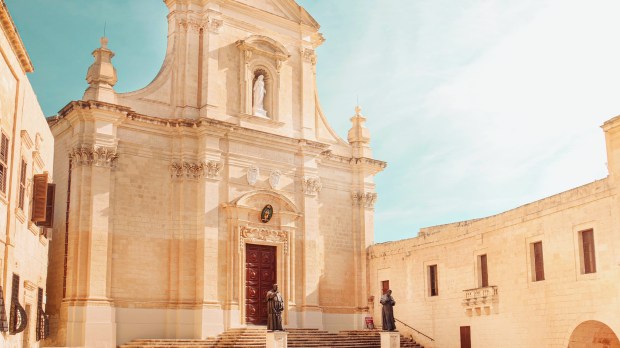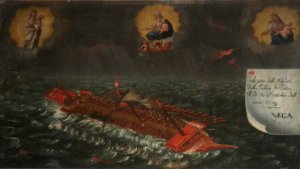The special patron of the Maltese Islands is the Blessed Virgin Mary in her Assumption into Heaven. In fact, the Archipelago is dotted with parishes, churches, and chapels dedicated to the Assumption – the Gozo Cathedral being the archipelago’s highest-ranking church with this title. There are a number of documented sources indicating that the first church on the site predates the cathedral by centuries. It was possibly dedicated to the Dormition of Mary, from which the title of the Assumption developed.
The present cathedral church has had many religious predecessors. The first was probably a megalithic temple, thousands of years ago. It is possible that Iċ-Ċittadella – the site of today’s cathedral – became a center of activity in an early prehistoric period. Its position, together with its covering of red topsoil, considered sacred by the Neolithics, made it an ideal temple site, but successive civilizations wiped away the remains of previous settlements.
The few trial excavations carried out so far have revealed a number of sherds from that period. Iċ-Ċittadella became the focal point of Gozo around 1500 BC, when it was fortified for the first time during the Bronze Age (1500–700 BC), amply proved by evidence from beneath the church and from the approach to Iċ-Ċittadella. The Phoenicians, who colonized Malta and Gozo around 700 BC, raised a temple on the spot. During the Phoenician and, eventually, the Carthaginian domination, Iċ-Ċittadella hill became the acropolis of the only town of the island of Gozo, and a temple was raised upon its highest point. A famous Punic inscription datable to the 3rd century BC records a decree of the people of Gozo for the restoration of four temples. One of them was dedicated to Astarte, the principal Carthaginian goddess. When the Romans took over in 218 BC, at the beginning of the second Punic War, they rededicated the temple to their goddess Juno. This temple dominated the acropolis and the town of Gaulus.
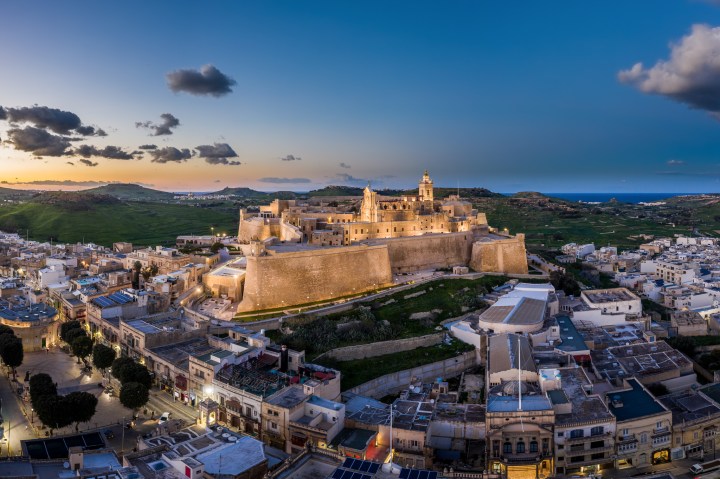
The first church — dedicated to Mary’s Dormition?
Picture this scene: It’s the year 60. St. Paul is sailing across the rough waters of the Mediterranean, on a ship belonging to the fleet of the Roman emperor. His destination is Rome itself, because the Apostle is under arrest, and he will be tried in Rome before Caesar after being accused of preaching Christianity in Jerusalem. Bashed by a storm, the Roman ship capsizes. What sounds like an unfortunate, almost tragic event turned out to be the birth of a 2,000-year, uninterrupted Christian Maltese tradition.
The fact that St. Luke was shipwrecked with Paul upon the Maltese archipelago might explain why both historical artifacts and oral traditions provide evidence of a very early Marian devotion spread throughout these islands. Luke is not only traditionally credited with the authorship of the very first Marian image of Christianity; his Gospel is the most Marian of them all, and is brimming with the seeds of what would later grow into full Mariological developments. In fact, Maltese traditions understand that it is likely that Luke spoke to the islanders about the Mother of the Jesus.
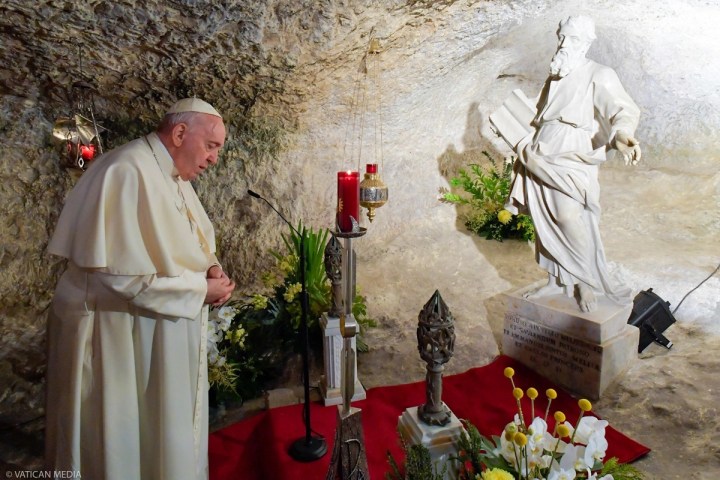
A place of ages
Indeed, a centuries-old tradition relates how Juno’s temple, referred to above, was dedicated by the early Christians to the Virgin Mary. This is a pious tradition, but in fact this temple is partly proved by archaeological remains dating from the early imperial period unearthed in abundance during the building of the present church between 1697 and 1711. The remains of this early temple are still fused in the structure of today’s cathedral church!
In both Eastern and Western Christendom, one of the most ancient Marian devotions is that of the Virgin’s Dormition — her Assumption into Heaven — as a premise of her imminent glorification. In fact, several early apocryphal sources, such as Transitus Mariae or Passing of Mary, the earliest extant historical writing on the Assumption, describe her death and burial in Jerusalem.
The oldest of these, believed to have been composed in the 2nd century by Leucius Karinus, a disciple of John, is thought to be based on an original document from the apostolic era, and possibly by the Evangelist himself. These works are not accepted as part of the Christian canon of Scripture, but, according to the biblical scholar Lino Cignelli, “All of them are traceable back to a single primitive document, a Judeo-Christian prototype, clearly written within the Mother Church of Jerusalem sometime during the second century, and, in all probability, composed for liturgical use right at the Tomb of Our Lady.”
Another fascinating aspect of the Transitus Mariae is that the three burial rooms described in the Syriac version coincide with the data derived from archaeological excavations and discoveries. At one time the Transitus Mariae was thought to have originated in the 4th century or later, but certain theological terms used confirm an origin either in the 2nd or 3rd century.
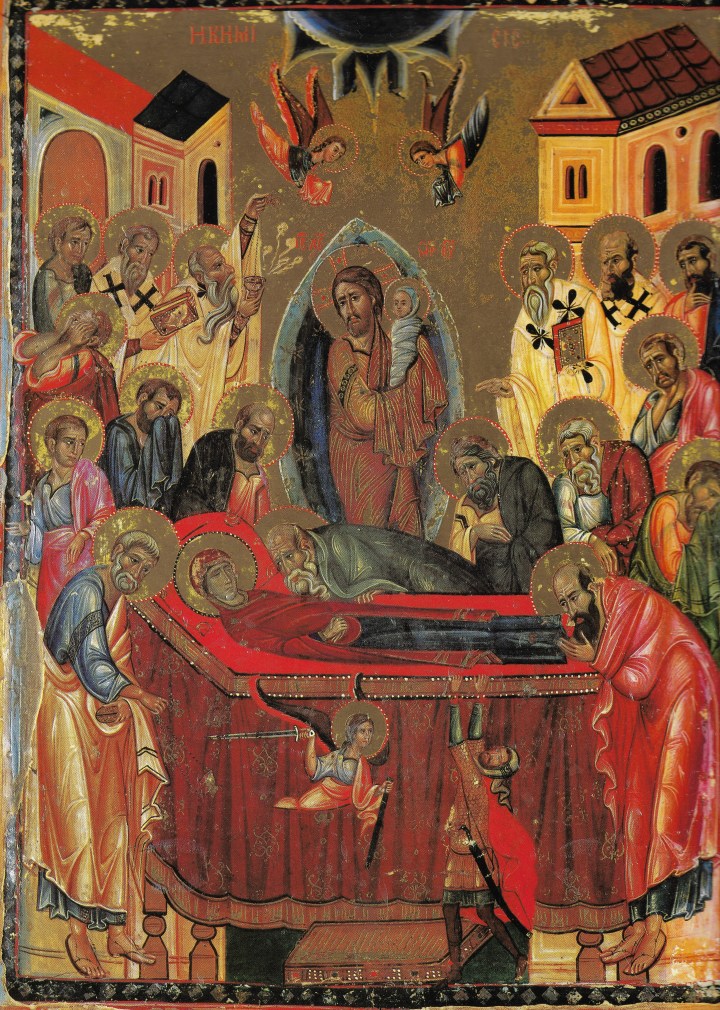
Holy Marija
Devotional life in the Maltese Islands has always given special prominence to the Assumption. In the Archipelago, it is known as Santa Marija Assunta (or just Santa Marija) – the Assumption of St. Mary.
Santa Marija has always been the most popular feast and fount of widespread devotion. Its early origins however are difficult to trace. A brief survey of the topographical distribution of the Assumption churches indicates in a highly evident manner widespread penetration of Marian devotion in Maltese religious tradition. So it would not be surprising at all if the early Gozo Christians dedicated the temple of Juno to the Dormition of Mary.
Also, in the 5th century, the Islands were conquered by the Byzantines, who ruled until 870. The Byzantines promoted Christianity and it was natural that they turned ancient pagan temples into Christian basilicas and churches. It is also a historical fact that once the Christian Church became the established religion of the Roman Empire, it reconsecrated pagan temples in honor of its saints, martyrs and the Blessed Virgin. Generally, temples that were dedicated to female pagan deities were then dedicated to the Virgin Mary under various titles. A prime example is that of the great temple of Diana at Ephesus, one of the wonders of the Ancient World, which the Church Fathers dedicated to their beloved Theotokos – the God Bearer – in the aftermath of the Council of Ephesus (431), the third General Council. During the First Crusade, Bishop Adhemar, the Papal Legate, wrote that it is almost impossible to visit a Byzantine church or monastery and not find an icon dedicated to the Theotokos.
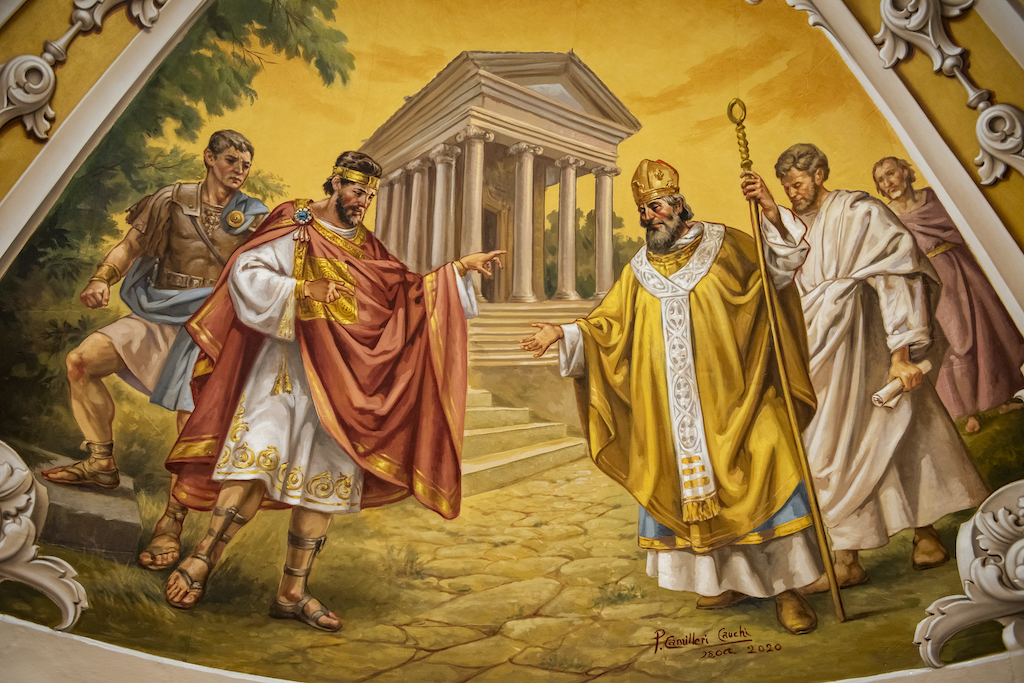
Medieval times
During the rule of Aragon (1282–1530), Iċ-Ċittadella steadily increased in importance. By 1435, its ecclesia maior, or major church, had become a matrice. The will of a certain Nuncio de Episcopo (1435) refers to the Sanctae Mariae Matricis Ecclesiae, the Mother-Church of Gozo dedicated to the Assumption of the Virgin Mary. After this first mention, references to the Matrice become more and more frequent, and they all attest to its antiquity and importance.
The medieval Matrice consisted of a single nave without aisles or transepts, but later noble families of Gozo, needing a decent burial place, bought property adjoining the Matrice. From references relating to these chantries and other sources, it is possible to draw up a plan of the medieval church. Upon entering, to the left, there was a Navarra chantry dedicated to the Virgin Mary of Loreto. Adjoining it stood a Mompalao chantry, dedicated to St. Lucy. Next to this, with a passage leading upon the presbytery, stood a Castelletti chantry dedicated to St. Catherine of Alexandria. On the opposite side, there was the Pontremolo chantry dedicated to the Annunciation of the Virgin Mary. The high altar at the back faced due east. The Matrice was dominated by the Sancta Maria retable, a seven-piece tempera on wood, now in the Cathedral Museum.
A cathedral, after conflicts and cataclysms
In 1530, the Islands were donated to the Knights of St. John of Jerusalem by the Holy Roman Emperor Charles V. In 1551, Iċ-Ċittadella was besieged by the Turks, led by Sinam Pasha and, the most feared of all the corsairs, Rais Dragut. The medieval walls were weak, and on July 26 they succumbed. The Matrice was pillaged. Around 500 escaped by letting themselves down on ropes; about 5,000 were dragged into slavery. Grandmaster Juan de Homedes and his Council initially entertained the idea of abandoning Iċ-Ċittadella. Yet land owners soon called back the refugees and those rich enough to ransom themselves. By 1554, the Matrice was functioning again. The stout-hearted Gozitans soon restored their church and their houses and persuaded the Council to change its mind.
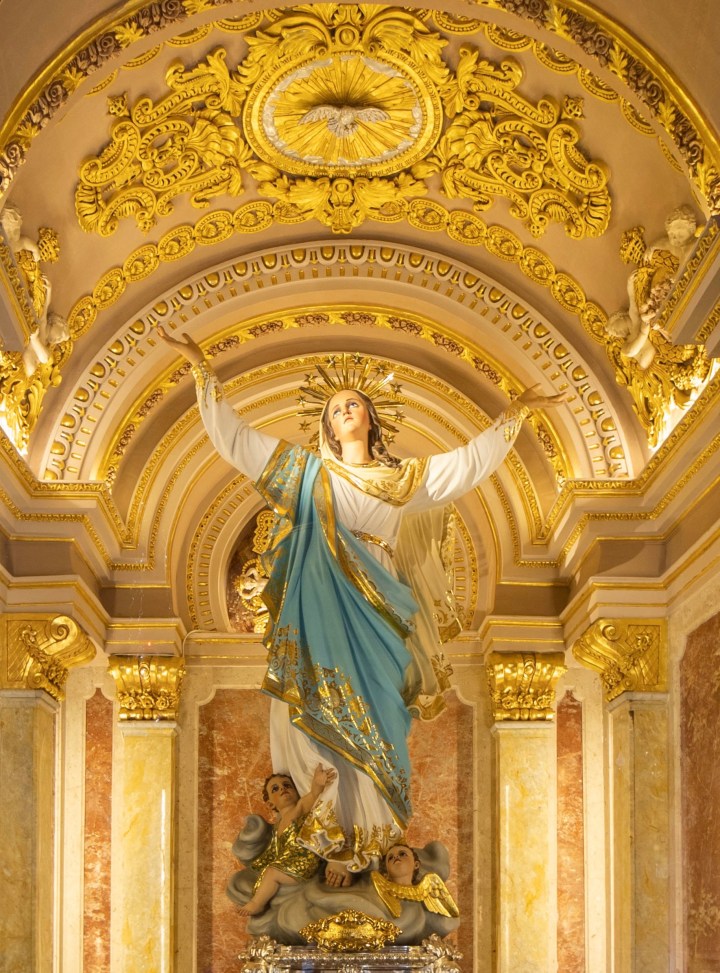
Foundation stone
In 1623, Bishop Cagliares re-established a Collegiate Chapter first documented in the 14th century. Pope Alexander VII reaffirmed this foundation of the Collegiate of Gozo in 1663. In 1680, Pope Innocent XI appointed Dun Karlu Magri as Archpriest of the Matrice, who soon got the bishop’s approval for the building of a new church. On January 11, 1693, while Magri was still laying the groundwork for the new church, the old one was irretrievably damaged by a violent earthquake. This hastened the project. Magri died later that same year, but his successor, Dun Nikol Natal Cassia-Magri, wholeheartedly proceeded with the project.
On September 21, 1697, the foundation stone of the present cathedral was laid. It was at this time that the remains of the Roman temple dedicated to Juno were discovered. The new church was officially inaugurated on the eve of the Assumption, August 14, 1711, and dedicated on October 11, 1716.
On June 10, 1798, Napoleon Bonaparte ousted the Knights from Malta, but in September the Maltese rose against the French. The Gozitan uprising was led by the Archpriest of the Matrice, Saverio Cassar, who succeeded in incarcerating all the French troops on the island within Iċ-Ċittadella walls. On October 28, 1798, the French surrendered. For nearly two years Gozo became an independent country known as La Nazione Gozitana. This came to an end on September 5, 1800, when British rule (1800–1964) was ushered in. On September 16, 1864, Pope Pius IX established the Diocese of Gozo and Comino, and the Matrice was declared the cathedral of the new diocese.
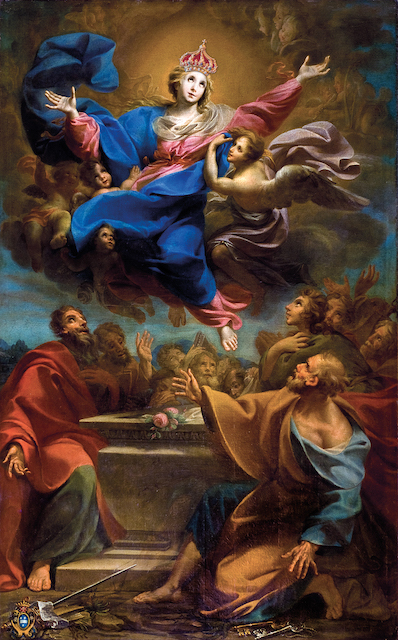
I would like to express my heartfelt thanks to Mgr. Dr. Joseph Bezzina, author of the book The Gozo Cathedral, its history and treasures, published in 2017, for his invaluable help and assistance to compile this article.
References
See the Holy Land. Tomb of Mary.
Bezzina J., Marian Devotions in the Islands of St. Paul – The Veneration of Our Lady in Gozo. Historical Society, Malta. 1983
